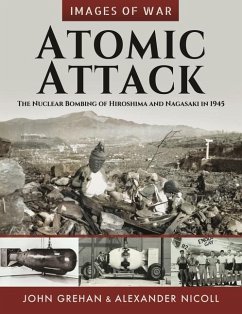At 08.15 hours on 6 August 1945, one of the most seismic events in human history unfolded over the Japanese city of Hiroshima. An atomic bomb, nicknamed _Little Boy_, exploded about 1,500 feet above the city with a force of 15,000 tons of TNT. Around five square miles of the city were destroyed in seconds and tens of thousands of its citizens and soldiers were killed. Three days later, a second atomic bomb was unleased against Nagasaki with similar devastating results. Less than a week later Emperor Hirohito announced Japan's unconditional surrender, bringing the Second World War to an explosive end. The story of the bombing of Hiroshima and Nagasaki begins with the Manhattan Project. From its inception in 1939, the Manhattan Project, which at its height involved more than 125,000 individuals and ultimately cost billions of US dollars, is explored in this book, as is the organisation and training of the bomb crews of 393rd Bombardment Squadron of Colonel Paul Tibbets' 509th Composite Group. For its attacks on Japan, the squadron was equipped with fifteen dazzling silverplate Boeing B-29 Superfortresses, which had been specially adapted to carry nuclear weapons. It is, of course, the dramatic events of 6 and 9 August 1945, which are featured most prominently in this book. Every step of the attacks, from the arming of _Enola Gay_ and _Bockscar_, which famously carried the two nuclear devices, to their take-off from Runway Able on the tiny island of Tinian, to the flights to the targets and the release of the bombs are revealed. Many are the unmistakable images of the detonation and effects of the two nuclear blasts, portrayed here in graphic contemporary photographs. Portraits of the key individuals are shown, as are the test sites, workshops, aircraft and the weapons themselves to provide a wide-ranging, comprehensive visual study of the steps which led to the first and only deployment of nuclear bombs in warfare.
Hinweis: Dieser Artikel kann nur an eine deutsche Lieferadresse ausgeliefert werden.
Hinweis: Dieser Artikel kann nur an eine deutsche Lieferadresse ausgeliefert werden.

